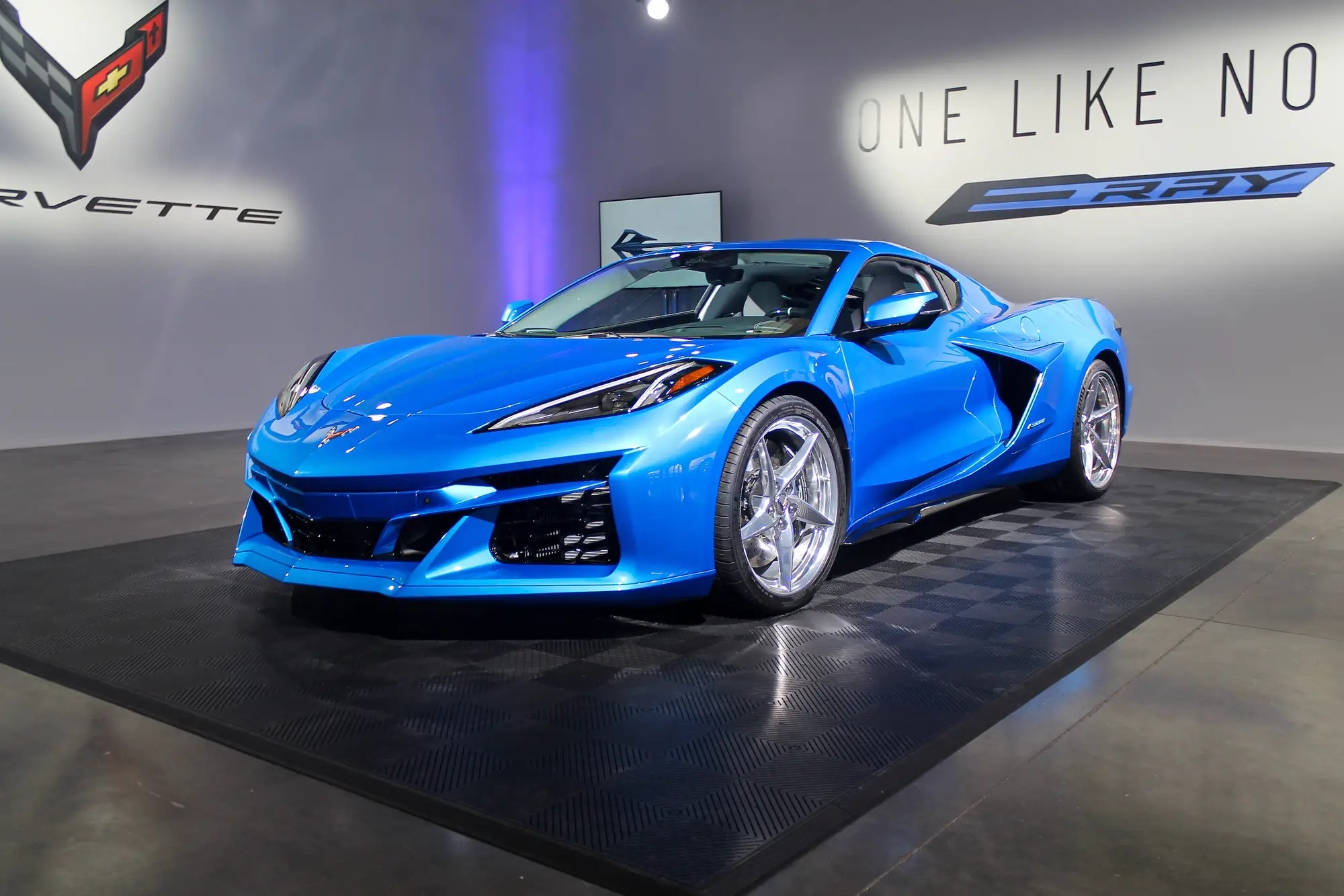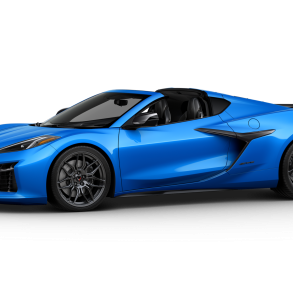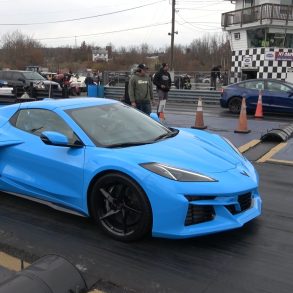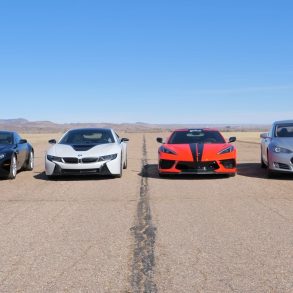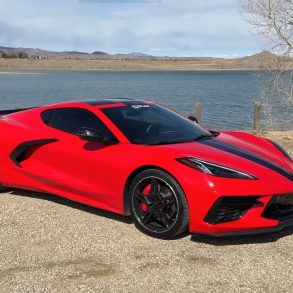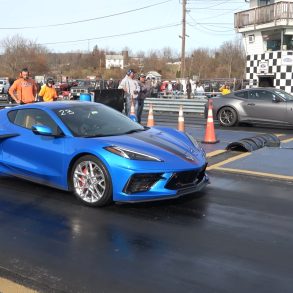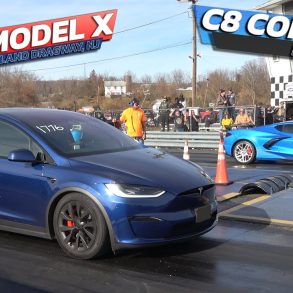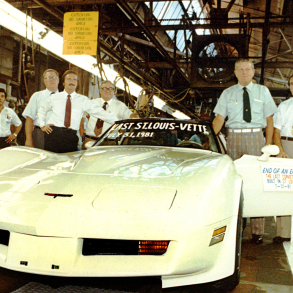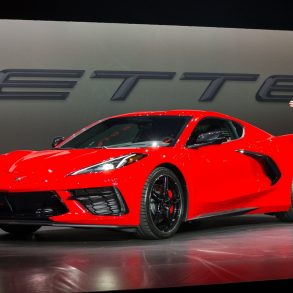Since its introduction in July 2020, the eighth-generation Corvette has introduced the world to some of the fastest, most powerful, best handling cars in the seventy-plus year history of the brand. Where the stock mid-engine Stingray crushed its predecessors in terms of acceleration and handling straight out the gate, the cars that have followed in its wake have taken things even further. First, in 2023, Chevrolet gave the world the mid-engine Corvette Z06, the fastest (by a good margin) production Corvette ever. Now, at the advent of the 2024 model year, we’re preparing for the arrival of the Corvette E-Ray.
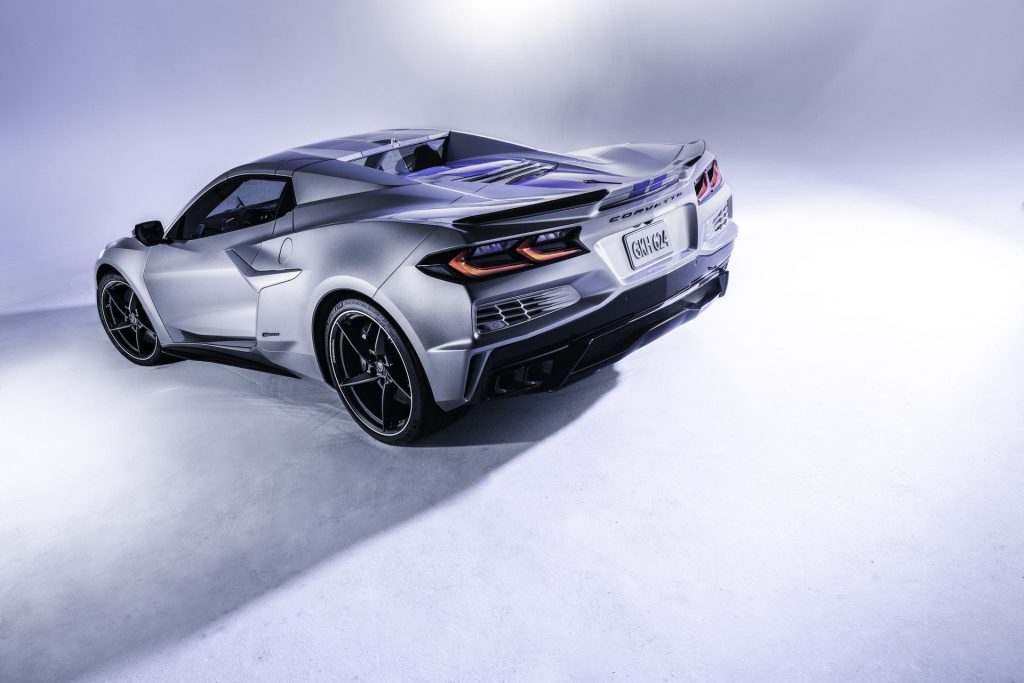
When it was first announced, we heard more than a few “grumblings’ about how the E-Ray was going to catapult the Corvette into the electric car era, thereby ruining 70+ years of tradition. Since that announcement, however, it seems that the Corvette community as a whole has largely embraced GM’s latest Corvette offering. Demand has increased, as has general public interest in the new, “electric” Stingray.
Before we delve deeper into the mystique surrounding Chevrolet’s latest entrant into the historical annals of America’s Favorite Sports car, I wanted to take a moment to clarify a few important points that set the E-Ray apart from other hybrids. Unlike the ever-increasing number of true, hybrid supercars emerging in today’s automotive landscape, the Corvette E-Ray cannot be plugged in. In fact, the electric motors on this car aren’t intended to serves a powertrain on their own. Rather, they are designed to enhance the car’s overall acceleration performance, not its fuel economy.
The E-Ray is a fusion of Chevrolet’s enormously popular eighth-generation Corvette Stingray powertrain and Z06 chassis, with a touch of “electronic wizardry” added in to propel this new car into the hypercar stratosphere. At its core is the same 495 horsepower pushrod 6.2-liter V8 engine, exhaust, and eight-speed dual-clutch transmission found in every mid-engine Corvette Stingray since 2020. That powertrain has been fused with the Z06’s wider body, optional carbon-ceramic brakes, and enormous 275/30ZR-20 (front) and 345/25ZR-21 (rear) Michelin Pilot Sport All-Season 4 tires. What makes the E-Ray, well, the E-RAY is this: a compact electric motor powered by a 1.1-kWh battery that adds an additional 160 horsepower thru the car’s front wheels.
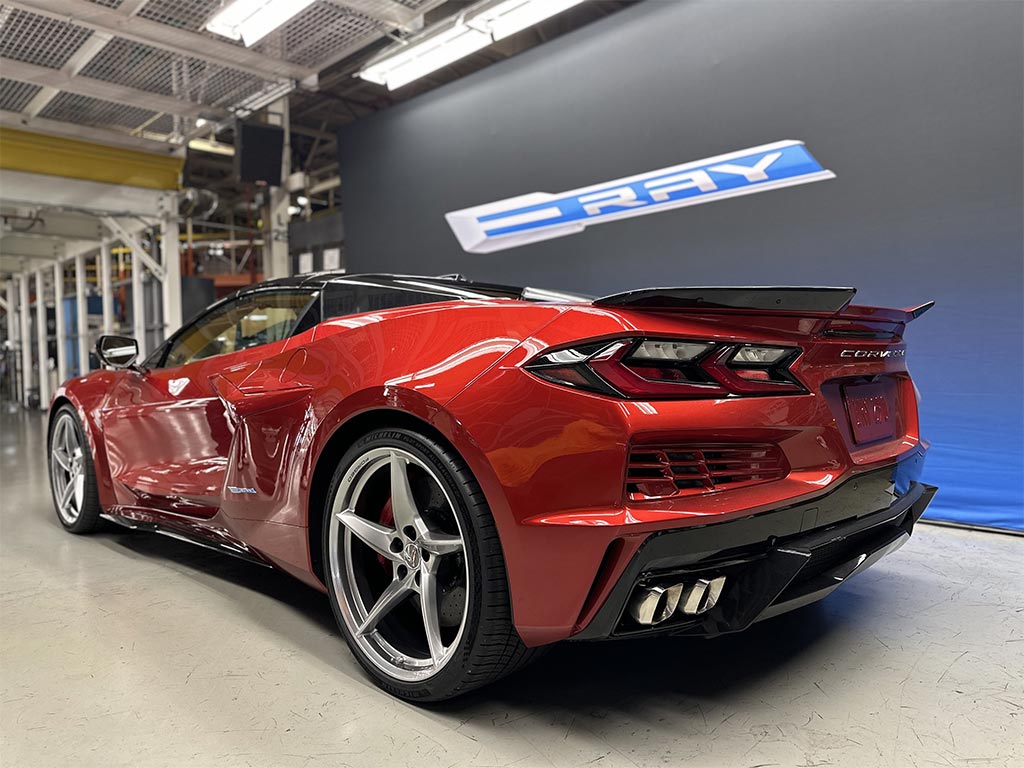
Do the math, and you’ll begin to understand the attraction. If we take the 495 horsepower engine and add another 160 horsepower to it, we’re looking at a car capable of producing 655 horses, which falls just 15 horsepower short of the power generated by the Corvette’s current flagship model – the eighth-generation Corvette Z06. What’s more, that “small” electric motor/electric powertrain produces an additional 125 pound-feet of torque all by itself.
If those numbers sound impressive, how about this? When using the included launch-control feature, the 2024 Corvette E-Ray can launch from zero to 60 miles per hour in just 2.5 seconds, which makes this Corvette 0.1 seconds faster than the record-setting C8 Z06! Add to that that you’ve got more launch control because this car is, essentially, an all-wheel-drive platform thanks to the electrified front motors, and you’ve got unprecedented acceleration with greater control than anything previously introduced in a Corvette platform.
While its 0-60 acceleration may hold the current production Corvette record, the E-Ray is just behind its Z06 “big” brother when it comes to its 10.6 second, 128-mph quarter mile time. While these numbers are beyond impressive, they’re still 0.1 second and 3 mph slower than the Z06 Corvette. What’s more, the E-Ray has a documented top speed (per Chevrolet) of 183 miles per hour as compared to the Z06’s 189 miles per hour. However, for its pricepoint, its a relative narrow margin given the aggressive aero add-ons required by the Z06 to achieve that 6mph difference in top-speed performance.
Elsewhere, the Z06 comes out just a bit ahead of the E-Ray as well. the E-Ray has a 1.08-g skidpad and 152-foot stopping distance from 70 miles per hour, compared to the Z06’s 1.10-g skidpad and 99 foot, seventy-to-zero stopping distance, but again, these performance differentiators were achieved in a Z06 equipped with the pricey Z06 track package added to it, a feature the E-Ray (as tested) was lacking, which strongly suggests that, apples-to-apples, the E-Ray is the “bargain” Corvette supercar that enthusiasts will be clamouring for in the very near future.
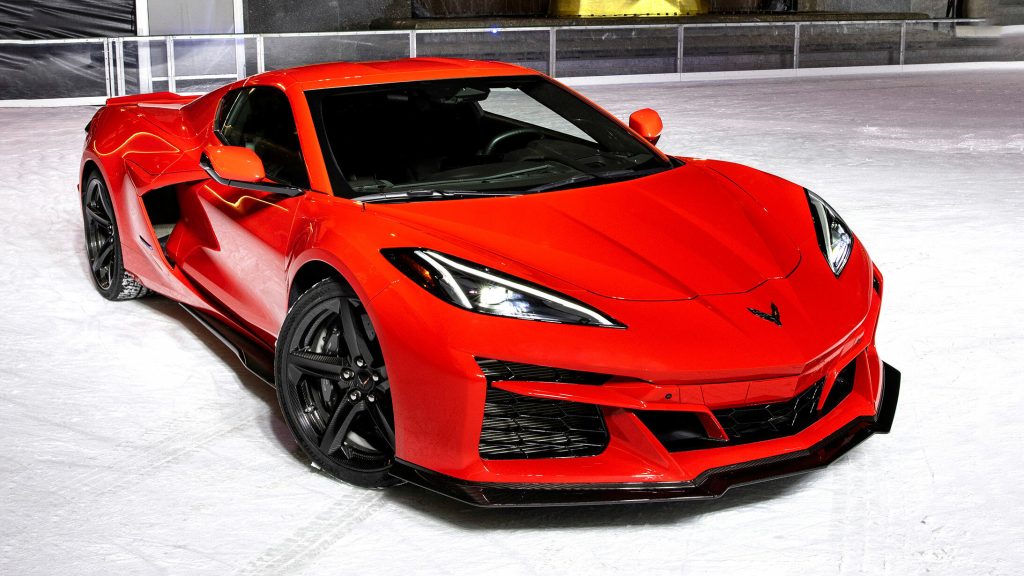
Moving past raw performance, its worth noting that the Corvette E-Ray does offer some other comforts worth noting during operation. First, it has been documented (by such authorities as Car and Driver magazine, MotorTrend, and others) that the E-Ray rides almost as well as the eighth-generation Stingray equipped with a Z51 track package. It tends to be a bit louder due to its larger wheels, and that noise is less dampened inside the cockpit than in the base model coupes/convertibles, but the car still provides its occupants with a more comfortable ride than owners of previous-generation Corvettes might suspect. Similarly, it’s steering is quite predictable and similarly settled to the base model Stingrays, though its larger tires offer drivers more grip than most will ever need in normal driving conditions. Braking is powerful (as would be expected from such a well appointed sports car) but reviewers have noted a mild softness as the start of brake pedal travel. This is due to the initial engagement of the generators at each wheel. These generators are designed to reclaim power during braking to charge the electric drive motor’s aforementioned battery cell.
When it comes to sound/noise, one area that is unique to the 2024 Corvette E-Ray is the car’s “Stealth mode” option. “Stealth mode” enables operators to drive their E-Ray away from their home using only the front wheel electric motors for up to five miles, just as long as you don’t exceed 45 miles per hour. Once the car goes over 45, or the battery charge drops below a specific threshold, the car’s gas-powered engine takes over. This may not sound like a huge differentiator to most, but for anyone who has left home in the early hours of the morning as they head to their local Cars & Coffee car shows, you (and moreover, the rest of your still-sleeping family) will enjoy the nearly silent departure of your E-Ray before the car’s powerful LT2 V8 engine roars to life.
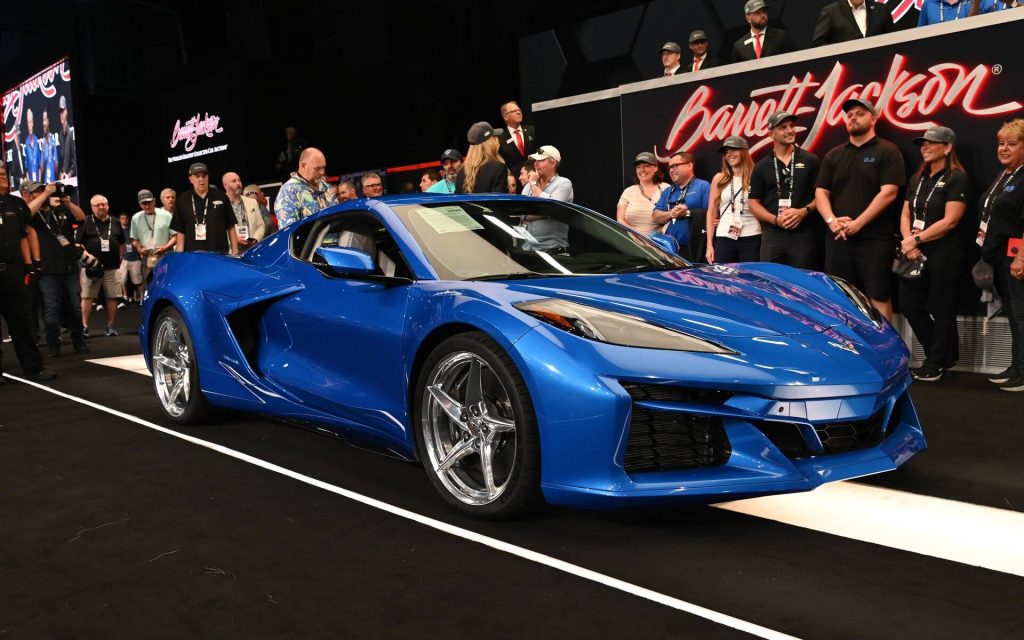
As with both the seventh- and eighth-generation Corvettes that came before it, the E-Ray still offers drivers the optional exhaust options during “normal” driving. The LT2 V-8 sounds muted when operated in Tour Mode, even when equipped with the Z51 performance exhaust package. However, adjust the exhaust to Sport or Track mode, and the exhaust note will resonate with all the crackle and thunder you’d expect from GM’s powerful 6.2L platform.
Interestingly, this “hybrid” Corvette does little to improve on overall fuel economy from its counterparts. If fact, Chevrolet estimates the car’s combined fuel economy at the same 19 mpg average as the base-model Stingray. This shouldn’t be too surprising to would-be owners as
Here’s one of the big questions that has divided some members of the Corvette community – is the new E-Ray trackable? To help answer that question, Chevrolet allowed Car and Driver to track an E-Ray at Pikes Peak International’s Roval. Per Car and Driver “(when) wearing summer tires on optional carbon-fiber wheels, the E-Ray enjoys high limits. It’s stable handling, ample grip, and faultless brakes make it easy to channel your inner Max Verstappen. Press the Charge+ button, and the system keeps the battery feeding juice to the electric motor no matter how many laps you run. Shut off Charge+ when the battery is at 100 percent, and you have roughly two laps of full hybrid power – enough extra boost to add about 10 mph at the end of the curving back straight.”
As for cost? The new 2024 Corvette E-Ray will start at $104,495, which is approximately twelve thousand dollars less than its Z06 counterpart’s starting price. While the car will quickly climb in price as options are added, its impressive to think that consumers can purchase Chevrolet’s premier hybrid Corvette for just a few thousand more than a base model coupe/convertible model.
For even more information on the Corvette E-Ray, please check back soon for our E-Ray Specifications Page (coming soon.)


